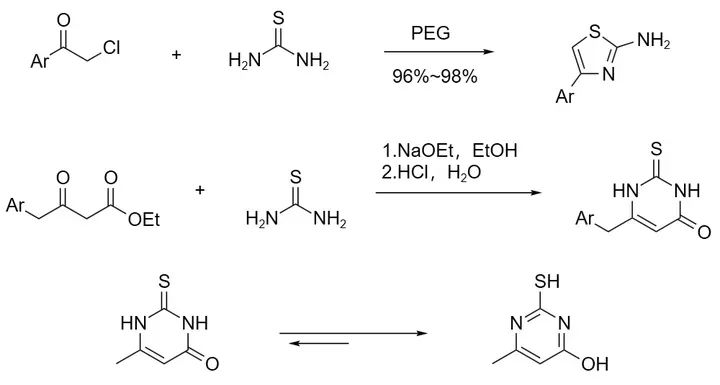Sinoright Blog
Commonly Used Reagent--Thiourea
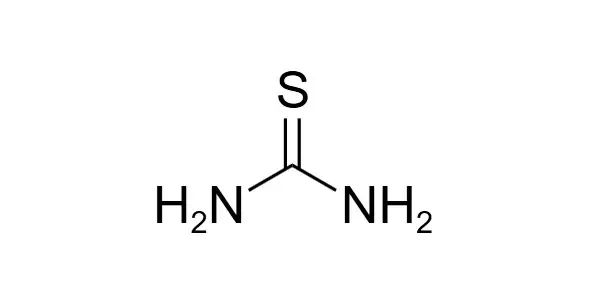
Product Name: Thiourea
Molecular Formula: CH4N2S
Molecular weight: 76.14
CAS No.: 62-56-6
Physical properties: light yellow solid, mp 182°C, d 1.405 g/cm³. Soluble in water and alcohol organic solvents, can be used in a variety of solvents.
Preparation and commodities: domestic and foreign reagent companies are sold.
Precautions: Stable at room temperature, but sensitive to water vapour, easily hydrolysed to produce hydrogen sulphide. Its solid powder is odorous and toxic and should be used in a fume cupboard.
Thiourea is a commonly used reducing agent and sulphur-containing reagent in organic synthesis, mainly for the reduction of endoperoxides and ozonides. It can also be used as an equivalent of nucleophilic hydrogen sulfide for the synthesis of thiols, sulfonic acids, sulfinic acids and their chlorides. It is also often used in the synthesis of heterocyclic aminothiazoles, pyrimidines and thiocyclopropanes, as well as methanimidic sulfinic acid.
The reagent can reduce peroxides to alcohols, e.g., the endoperoxide of cyclopentadiene to the corresponding diol. It is also possible to reduce the ozonides obtained after ozonation of olefins to the corresponding dicarbonyl compounds. This is an important method for the conversion of olefins into carbonyl compounds and for the structural identification of early degraded olefins.
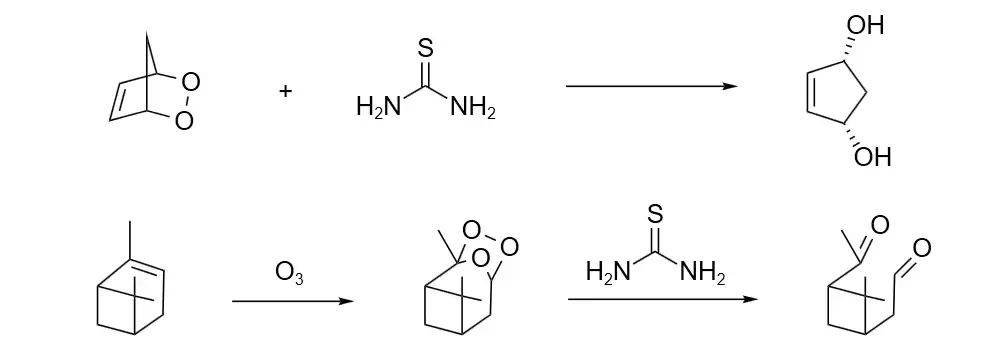
Another important use of this reagent is as an equivalent of hydrogen sulphide for the preparation of thiols, sulphonic acids and their chlorides. The reaction of the sulphur atom in thiourea with haloalkanes or sulphonate esters yields the isothiourea ammonium salt intermediate, whose hydrolysis under alkaline conditions gives thiols. Compared with the method of preparing thiols with hydrogen sulphide or hydrocarbons, this method has the advantage of avoiding the generation of the by-product thioethers, and many conditions can affect the conversion of isothiourea ammonium salt intermediates, for example: oxidation with peracetic acid gives sulphonic acid, oxidation with chlorine gives sulphonyl chloride, and substitution of an alkyl sulphur group with an amine gives substituting guanidine.
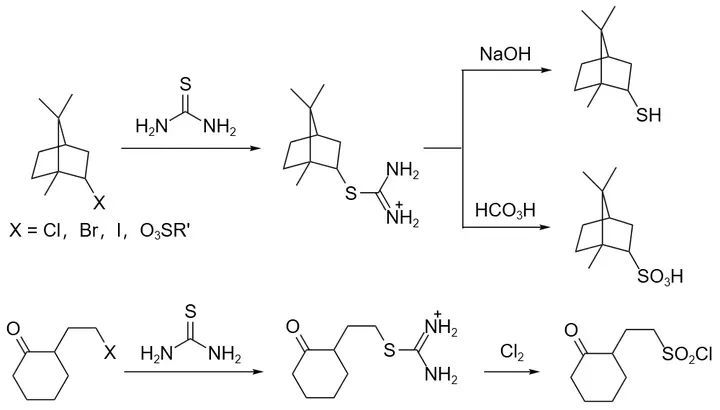
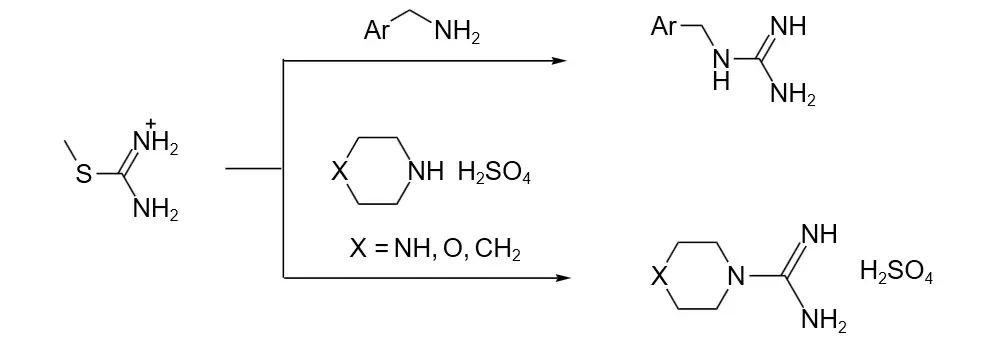
Thiourea can also be used to synthesise heterocyclic compounds containing sulphur atoms or mercapto groups. For example, by reacting thiourea with an epoxy compound, the epoxy compound can be converted into the corresponding thiocyclopropane derivative in one step. If chiral epoxy compounds are used, conformationally flipped thiocyclopropanes can be obtained.
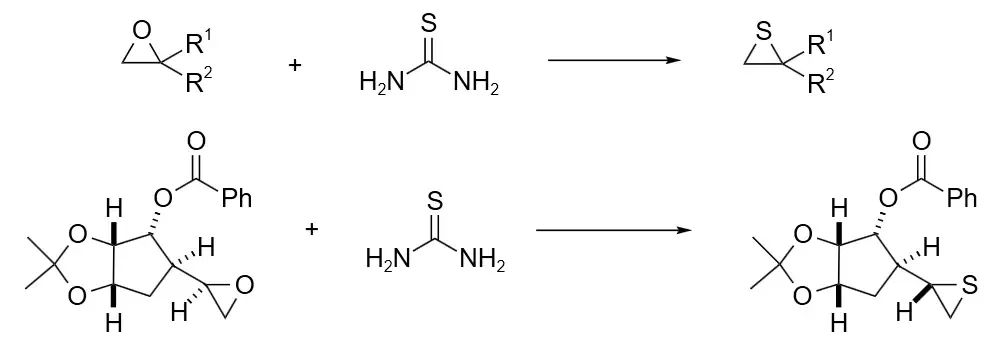
The reaction of thiourea with α-haloketones is used to prepare 2-aminothiazole derivatives, and with β-oxocarboxylates to give 2,3-dihydro-2-thioxo-pyrimidin-4(1H)-ones. The latter readily undergoes interconversion to 2-mercapto-4-hydroxypyrimidine.
